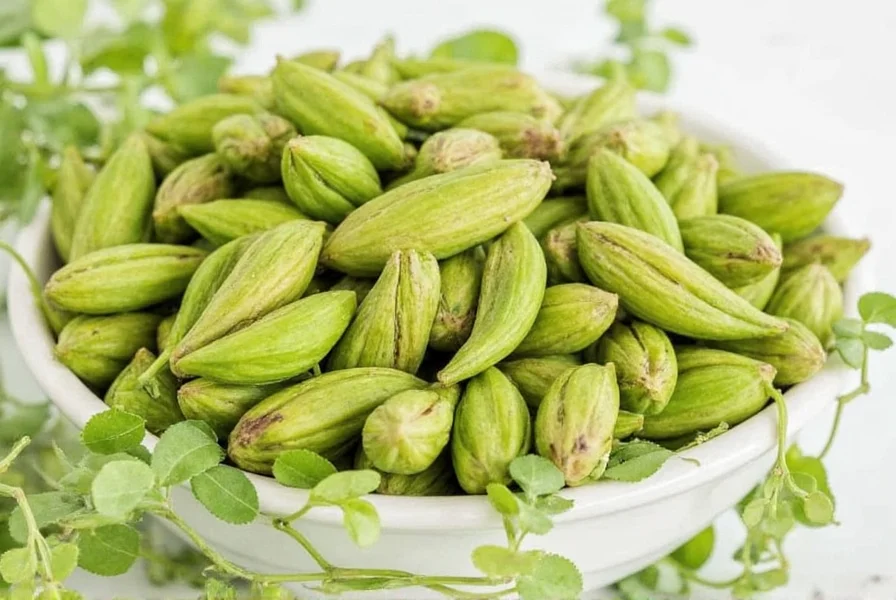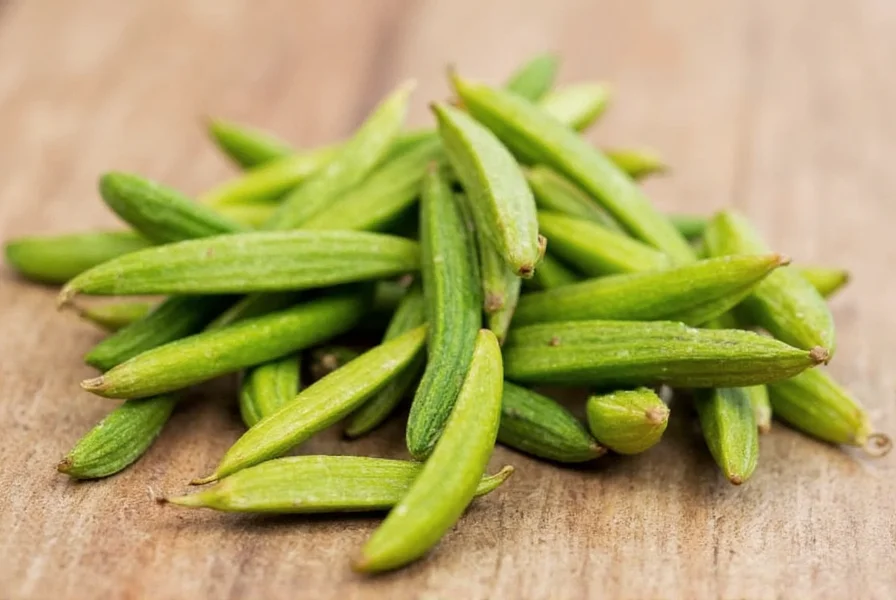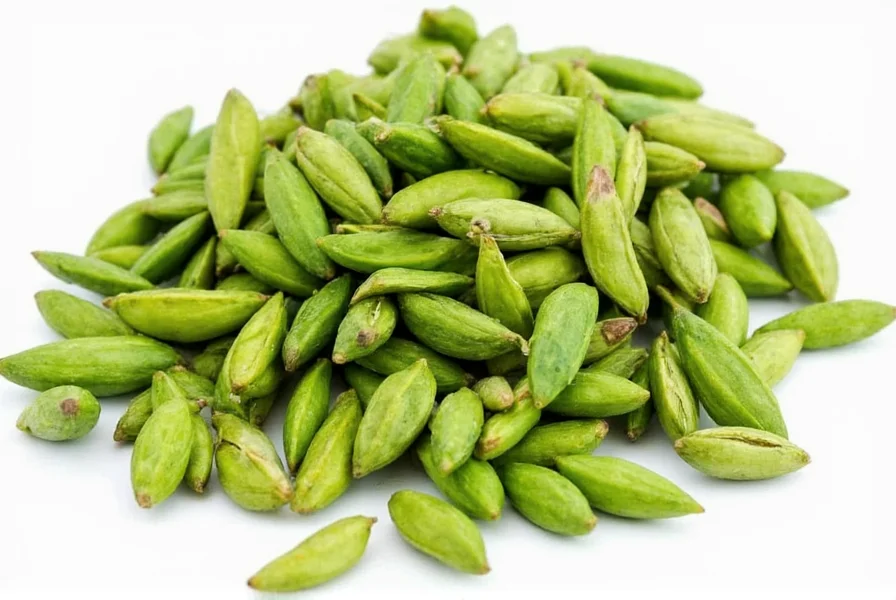Green cardamom stands as one of the world's most prized spices, commanding prices second only to saffron in some markets. Its distinctive aroma and versatile flavor profile make it indispensable in both sweet and savory culinary traditions across multiple continents. Unlike its smokier cousin black cardamom, green cardamom offers a brighter, more delicate essence that enhances dishes without overwhelming other ingredients.
Understanding Green Cardamom Varieties
When exploring green cardamom vs black cardamom, the differences extend beyond color. Green cardamom (Elettaria cardamomum) grows in moist, tropical climates and features small, triangular pods with a pale green hue. Black cardamom (Amomum subulatum) originates from the Himalayas and has larger, dark brown pods with a distinctly smoky character due to traditional drying methods.
| Characteristic | Green Cardamom | Black Cardamom |
|---|---|---|
| Botanical Name | Elettaria cardamomum | Amomum subulatum |
| Flavor Profile | Citrus, mint, floral | Smoky, camphorous, earthy |
| Primary Culinary Use | Desserts, beverages, light sauces | Hearty stews, meat dishes, spice blends |
| Pod Size | 1-2 cm, slender | 2-3 cm, larger and darker |
Nutritional Composition and Health Benefits
Scientific analysis reveals green cardamom contains over 100 volatile compounds contributing to its therapeutic properties. The essential oil composition typically includes 20-30% 1,8-cineole (eucalyptol), 10-15% limonene, and smaller amounts of α-terpineol and linalool. These compounds work synergistically to provide several potential health benefits:
- Digestive enhancement: Studies show cardamom stimulates digestive enzymes and may reduce symptoms of indigestion and bloating
- Antioxidant capacity: With an ORAC value of approximately 1,500 μmol TE/100g, it helps combat oxidative stress
- Oral health support: Traditional use as a breath freshener is supported by research showing antimicrobial effects against oral pathogens
- Anti-inflammatory properties: Animal studies indicate potential reduction in inflammatory markers
It's important to note that most research examines concentrated extracts, so health benefits of green cardamom in typical culinary usage remain supportive rather than therapeutic. The spice contains negligible calories (311 kcal per 100g) but delivers significant manganese (2.2 mg per teaspoon, about 100% of daily value).
Culinary Applications Across Global Cuisines
Green cardamom's versatility shines in diverse culinary traditions. In Scandinavian baking, it features prominently in lussekatter (saffron buns) and pepparkakor (ginger cookies). Middle Eastern cuisine uses it in gahwa (traditional coffee) and rice dishes like machboos. Indian kitchens incorporate it into both sweet preparations like kheer (rice pudding) and savory dishes such as biryani.
For those exploring how to use green cardamom in baking, professional chefs recommend these techniques:
- Crush pods gently with a mortar and pestle to release seeds without pulverizing them
- Use whole pods in rice dishes, removing before serving
- Grind seeds just before use for maximum flavor retention
- Add ground cardamom early in baking processes to allow flavor integration
- Pair with complementary spices like cinnamon, cloves, and nutmeg in equal proportions

Selection, Storage, and Preparation Methods
The best way to store green cardamom pods involves understanding their volatile nature. Whole pods maintain freshness significantly longer than pre-ground spice. When selecting, look for:
- Firm, unblemished pods with vibrant green color
- Heavy pods (indicating plump seeds inside)
- Intact husks without cracks or splits
- A pronounced aroma when lightly crushed
Store whole pods in an airtight container away from light and heat. Properly stored, they maintain peak quality for 6-12 months. For extended storage, freeze pods in vacuum-sealed bags for up to two years. Never store ground cardamom for more than 3-4 months, as volatile compounds degrade rapidly.
When preparing cardamom, professional chefs recommend dry-roasting whole pods for 1-2 minutes before grinding to enhance flavor complexity. This technique develops deeper notes while preserving the spice's characteristic brightness. For traditional Indian recipes with cardamom, many chefs toast the pods with other whole spices before incorporating them into dishes.
Substitution Strategies and Flavor Pairings
When facing limited availability, understanding green cardamom substitute options becomes essential. While no perfect replacement exists, these alternatives work in specific contexts:
- For baking: Equal parts ground cardamom substitute with 1/2 part cinnamon + 1/4 part nutmeg + 1/4 part allspice
- For savory dishes: Black cardamom (use half amount due to stronger flavor)
- For beverages: Coriander seeds (1:1 ratio) with a squeeze of lemon
Cardamom pairs exceptionally well with citrus fruits, pears, apples, chocolate, and dairy products. In savory applications, it complements lamb, chicken, and root vegetables. The spice's complex chemistry interacts favorably with fats, making it particularly effective in creamy sauces and desserts.
Common Preparation Mistakes to Avoid
Many home cooks make critical errors when working with green cardamom that diminish its impact:
- Using pre-ground cardamom that has lost volatile compounds
- Adding ground cardamom too late in cooking processes
- Over-roasting pods until they become bitter
- Using excessive amounts that overwhelm other flavors
- Storing near strong-smelling spices that can alter its delicate profile

Traditional Preparation Techniques
Culinary traditions have developed sophisticated methods for maximizing green cardamom's potential. In Middle Eastern coffee preparation, cardamom pods are lightly crushed and added directly to the brewing process, creating a distinctive aromatic experience. Scandinavian bakers often combine cardamom with butter and sugar to create a paste that distributes flavor evenly throughout dough.
For authentic Indian chai, chefs recommend using 3-4 whole pods per serving, lightly crushed and simmered with tea leaves and milk. This technique extracts maximum flavor while preventing bitterness. When making Persian rice dishes, many chefs toast cardamom pods with butter before adding rice, creating a flavor foundation for the entire dish.
Frequently Asked Questions
What does green cardamom taste like compared to black cardamom?
Green cardamom offers a bright, complex flavor with citrus, mint, and floral notes, while black cardamom has a smoky, earthy profile due to traditional drying methods. Green cardamom works well in both sweet and delicate savory dishes, whereas black cardamom suits hearty stews and meat preparations.
How should I store green cardamom to maintain freshness?
Store whole green cardamom pods in an airtight container away from light and heat. Properly stored, they maintain peak quality for 6-12 months. For extended storage, freeze pods in vacuum-sealed bags for up to two years. Never store ground cardamom for more than 3-4 months as volatile compounds degrade rapidly.
Can I substitute green cardamom in baking recipes?
Yes, but substitutions vary by application. For baking, use a blend of 1/2 part cinnamon + 1/4 part nutmeg + 1/4 part allspice to approximate cardamom's flavor profile. In Scandinavian recipes, this combination works well, though it won't replicate cardamom's distinctive citrus notes exactly.
What are the health benefits of consuming green cardamom?
Green cardamom contains antioxidants like cineole and limonene that may support digestive health, reduce inflammation, and improve oral hygiene. Research suggests potential benefits for digestion and antioxidant activity, though most studies examine concentrated extracts rather than culinary usage amounts.
How do I properly prepare green cardamom for cooking?
For optimal flavor, lightly dry-roast whole pods for 1-2 minutes before grinding. Crush pods gently with a mortar and pestle to release seeds without pulverizing them. Use whole pods in rice dishes (removing before serving) or grind seeds just before use. Add ground cardamom early in baking processes for best flavor integration.











 浙公网安备
33010002000092号
浙公网安备
33010002000092号 浙B2-20120091-4
浙B2-20120091-4